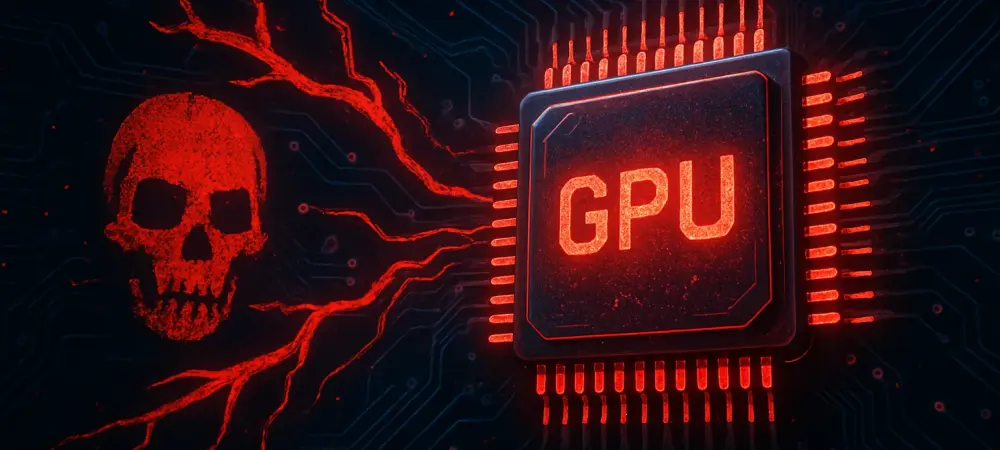What happens when the very platforms trusted for daily work become silent weapons in a cyberattack? Picture a developer searching for a familiar tool like GitHub Desktop, only to unknowingly download a malicious payload that could cripple an entire organization. This is the chilling reality of GPUGate, a malware campaign that cunningly exploits Google Ads and GitHub to target IT professionals. By turning routine searches into traps, this threat reveals a darker side of digital trust, demanding attention in an era where even legitimate platforms can harbor danger.
Why This Cyber Threat Demands Attention
In today’s digital landscape, where cyberattacks grow more insidious by the day, GPUGate stands out as a particularly alarming menace. Active since at least last year, this campaign zeros in on high-value targets—developers and IT staff, primarily in Western Europe—with the intent to steal credentials, exfiltrate data, and deploy ransomware. Its significance lies in the exploitation of trusted platforms, undermining the confidence placed in tools integral to professional workflows.
The stakes are high, as this malware doesn’t just affect individuals but can infiltrate entire organizational networks. With attackers focusing on those with elevated privileges, the potential for widespread damage is immense. This story isn’t just about a single threat; it’s a wake-up call about the evolving sophistication of cyber adversaries who manipulate familiar systems to devastating effect.
The Intricate Web of Deception
At the heart of this campaign is a meticulously crafted strategy that begins with Google Ads. Malicious sponsored ads are positioned at the top of search results for popular software like GitHub Desktop, guiding unsuspecting users to what appears to be a legitimate repository page. These ads exploit the automatic trust many place in top search results, creating a seamless entry point for the attack.
Beyond ads, attackers manipulate GitHub itself by embedding malicious commits in repositories. These commits retain authentic-looking metadata, tricking users into believing they’re interacting with genuine content. However, the download links within lead to domains controlled by the perpetrators, ensuring the delivery of a harmful payload under the guise of credibility.
A Technical Masterstroke in Evasion
One of the most striking aspects of this malware is its ability to evade detection through innovative technical barriers. The payload arrives in a 128 MB installer file, deliberately oversized to bypass security sandboxes that often have file size limits. This alone showcases a calculated effort to slip past conventional defenses.
Even more remarkable is the GPU-gated decryption mechanism. The malware only decrypts its contents if it detects a physical GPU with a device name longer than ten characters, a condition rarely met in virtual environments used for analysis. This clever tactic frustrates security researchers, keeping the true nature of the threat hidden in controlled settings.
Post-Infection Chaos and Persistence
Once activated on a suitable system, the malware unleashes a series of destructive actions. Through PowerShell scripts, it escalates privileges to administrative levels, gaining control over critical system functions. This step ensures attackers can operate with near-unlimited access within the compromised environment. Persistence is achieved by setting up scheduled tasks, allowing the malware to remain active even after reboots. Additionally, it disables Windows Defender by adding exclusions, effectively neutralizing one of the primary lines of defense. This combination of tactics enables long-term, undetected operation, amplifying the potential for damage.
Expert Perspectives on a Growing Menace
Insights from cybersecurity professionals paint a grim picture of this campaign’s sophistication. Discovered by a leading cybersecurity operations center, the threat is believed to be orchestrated by a Russian-speaking actor, pointing to a highly skilled and organized effort. Analysts have highlighted the GPU-based decryption as a groundbreaking evasion method, marking a shift in how threats challenge traditional security tools.
A prominent researcher noted, “The ability to hide behind trusted platforms while using technical barriers like GPU checks signals a troubling evolution in attack strategies.” Such observations underscore the urgent need for updated defenses. The consensus among experts is clear: this is not a fleeting issue but a harbinger of more complex threats on the horizon.
Arming Against an Invisible Enemy
Safeguarding against such a stealthy threat requires a multi-layered approach. Start by verifying the authenticity of search results and download links, even those appearing at the top of Google or within GitHub repositories. Navigating directly to official sources can often prevent falling into deceptive traps set by attackers.
Enhancing endpoint security is equally critical. Deploy solutions capable of detecting oversized installers or anomalous behavior, moving beyond reliance on sandbox-based analysis. Training IT teams to recognize social engineering tactics and the risks of unverified downloads adds another vital layer of protection, especially for those with network privileges.
Continuous monitoring for unusual activity, such as unexpected PowerShell scripts or changes to security settings, can help catch persistence mechanisms early. Staying informed through threat intelligence services ensures organizations remain ahead of emerging campaigns, adapting defenses proactively to counter sophisticated adversaries.
Reflecting on a Battle Fought
Looking back, the campaign known as GPUGate served as a stark reminder of how deeply cybercriminals could infiltrate trusted digital spaces. It exposed vulnerabilities not just in technology but in human trust, exploiting both with ruthless precision. Each deceptive ad clicked and each malicious download executed marked a small victory for attackers, but also a lesson for defenders.
Moving forward, the focus shifted to actionable steps—strengthening verification habits, bolstering technical safeguards, and fostering a culture of vigilance. The fight against such threats demanded not just reaction but anticipation, preparing for the next wave of innovation from adversaries. Ultimately, the legacy of this malware became a catalyst for smarter, more resilient cybersecurity practices across industries.

